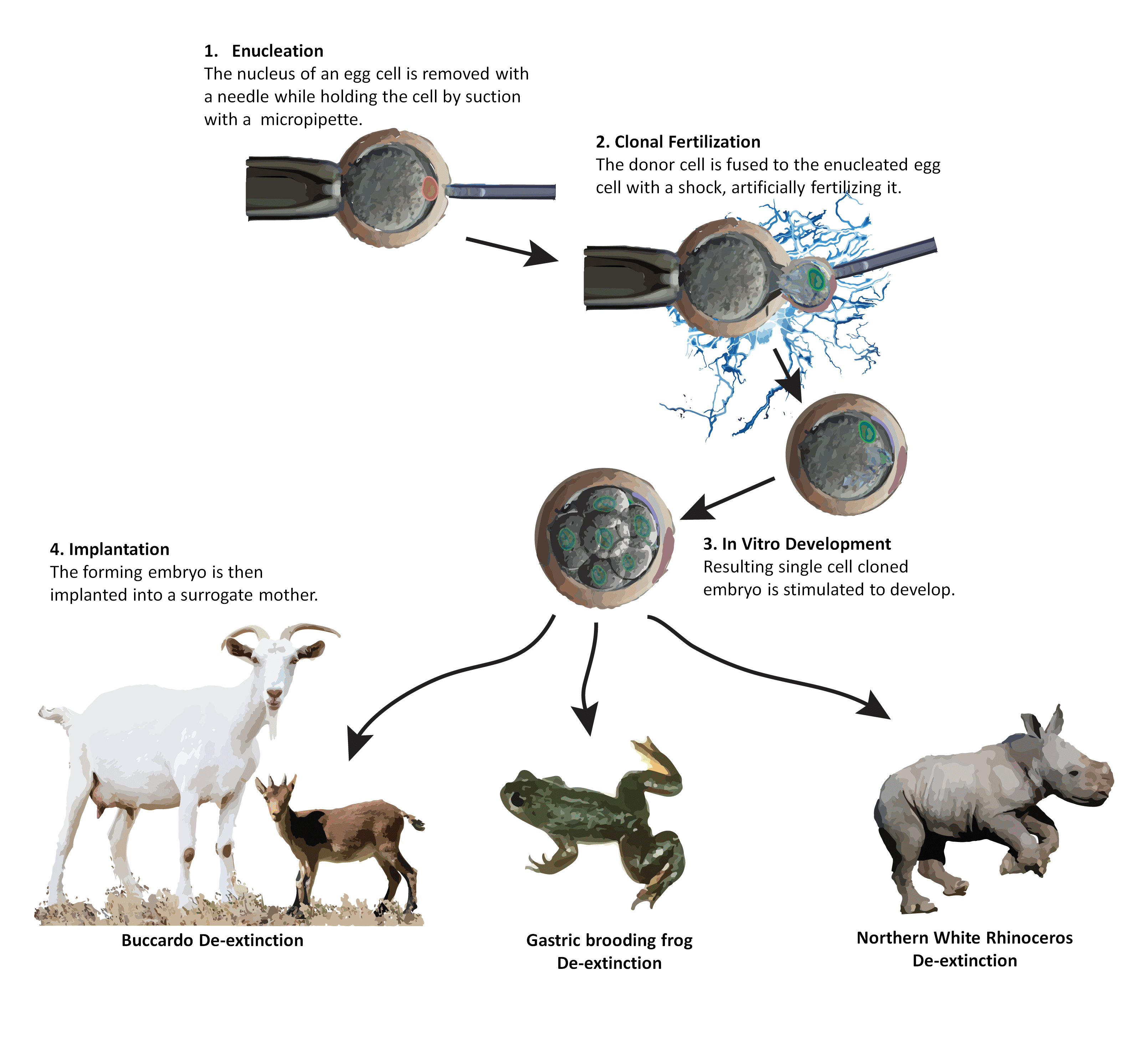Have you ever imagined living in a world full of dinosaurs as a child? I definitely have. With progressions in the field of resurrection biology, otherwise known as de-extinction, the possibility of witnessing real, live dinosaurs becomes an imminent possibility. De-extinction is the process of creating a species from the DNA of the fossils of extinct species, essentially bringing extinct species back to life.

The most promising method for de-extinction is made possible through state-of-the-art cloning techniques. First, DNA from fossils and other preserved animal tissues would have to be extracted from existing sources. After these are obtained, an artificial nucleus (the part of the cell that holds the DNA) would be created, holding all of the extracted DNA. Then, the egg cell of a living organism that is closely related to the extinct species would have its own nucleus extracted and the artificially created nucleus inserted in. This egg cell would then be allowed to develop regularly in its mother as if it were a regular offspring of the original animal, so that the once-extinct animal would quite literally be “reborn”.

There are many benefits to bringing species back to life. It would increase the biodiversity of our ecosystems when many species are constantly becoming endangered. It would allow humans to right the wrong that we have done in the past, which was causing the extinctions of many of these species in the first place. And most importantly, it would just generally be really cool to see sights like a woolly mammoth wandering around in the ravine.

Needless to say, there are huge detrimental factors that prevent the further advent of de-extinction technologies. Further developing of current technologies to be functional for bringing species back to life would be extremely costly, and scientists have often suggested that this money could be better spent protecting living, endangered species from going extinct. Furthermore, not all species can be brought back to life, such as animals that have all their DNA already degraded, and not all species should be brought to life for safety reasons, which unfortunately also includes the dinosaurs. Resurrected species may also have very limited gene pools, thus decreasing genetic variation and chances of the survival of the species.
Despite all these negative considerations, scientific progress is continually being made in genetics and bioengineering. Who knows, maybe one day you will have passenger pigeons as pets or see woolly mammoths in zoos! I don’t know about you, but I’ve got my fingers crossed for a dinosaur exhibit somewhere in the world!
